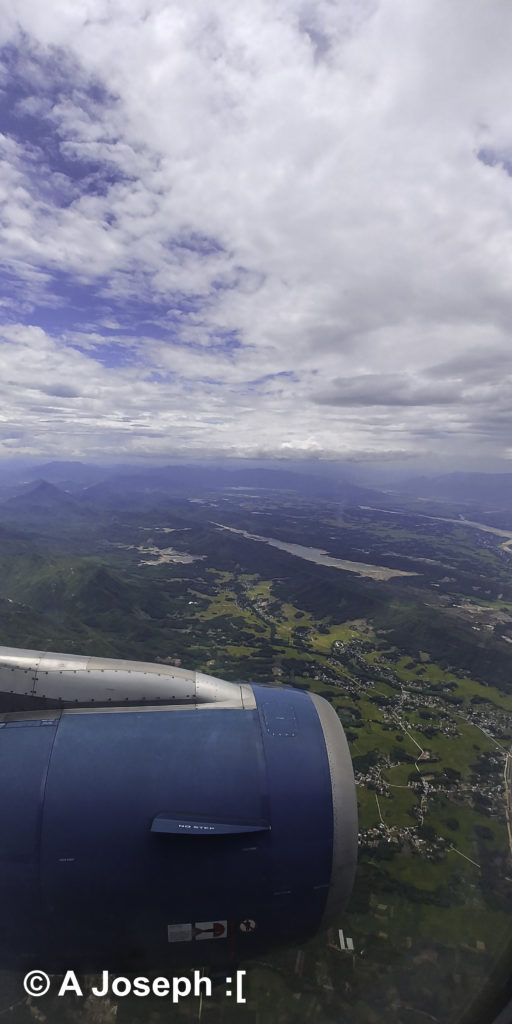
If you are limited for time, it can often be tempting to try and visit one location, check into one hotel at the beginning of the hotel and then return home. Personally I have quite a short attention span so I tend to limit stays in a particular hotel to 4-5 days or less. This means on a two week holiday we are often in 4 or 5 hotels and have taken multiple flights. We once took 12 flights over the course of a three week holiday to Singapore, Bali, Kuala Lumpur and central Vietnam. On that same trip we also took two boats, three trains and numerous taxis to get between our bases. Moving around tends to be all about maximising your time and prioritising what you want to do in a specific location.
The advantages of having multiple stops is you can take advantage of your entry into a particular region to explore other parts of that region. The largest barrier tends to be your intercontinental travel, so once that has been cleared regional travel becomes much more possible. Many backpackers do this, but they generally have quite a lot of flexibility around specifics, such as staying in a particularly nice hotel or booking a nice meal that is only available on specific days. They also tend to have a longer period to fit things in when compared to someone trying to have an entire trip over the course of school Easter holidays.
When it comes to my planning of multi centre trips the first thing I always recommend is to do a rough day plan. This does not have to be final but you need to know how long you have available from the time you will be landing until a few hours before you take off. Once you have done this you can then start splitting that time up into pots for different locations you want to base yourself over the length of the holiday based on what you want to do.
Depending on where you are, you will be transferring between hotels using land, air or sea based transportation. Each of these has their own considerations with air based requiring the most overhead time due to security but being the quickest; sea based being the most susceptible to weather conditions, generally quite slow and but reasonably efficient in terms of the departure procedures; and land based whether by car or public transport normally being the most convenient but not always available based on where you want to go.
There are a couple main ways you can choose to do a multi centre trip. The easiest and most straightforward is a simple point to point where you never revisit anywhere and directly transfer from one new location to another. These tend to have the least time wastage but can be limited by airline flight availability in the case where you need to take multiple flights. Even when no flights are involved if you want to visit locations which are in geographically opposite directions from your arrival airport, it can also be easier to keep travelling from you starting hub regardless of whether you choose to stay there or not.
Alternatively you can adopt the hub and spoke approach, where you essentially take one location as your base location and treat every other location as a return trip to your hub. We have actually done this on multiple occasions and there are some clear advantages over other approaches. Quite often, especially if the stops on your trip are quite far apart, it can be considerably cheaper to book return flights from a hub rather than trying to put together a multi stop flight itinerary or booking singles. This is especially true in the era of low cost airlines. It is still possible to book a multi stop ticket on a legacy network airline, but quite often these stop you from booking at special offer prices and even add a substantial premium.
On our aforementioned trip to South East Asia we treated Kuala Lumpur as our hub even though we were actually arriving in Singapore and then booked separate return flights from Kuala Lumpur to Bali and Kuala Lumpur to Da Nang. This was considerably cheaper than booking flights from Singapore, or flying directly to Bali in the middle of school summer holidays. It was also much cheaper to fly to Singapore and then book a return from Singapore to Kuala Lumpur than it was to fly to Kuala Lumpur and book a return to Singapore. Our final tickets were as follows: Birmingham to Singapore return, Singapore to Kuala Lumpur return, Kuala Lumpur to Bali return and Kuala Lumpur to Da Nang return.
If you are having to fly and the flights are going to be relatively short you should try as much as possible to avoid having to travel in the middle of the day. Travelling either early in the morning or in the evening means you will actually be able to use the rest of the day to explore wherever you are at that point in time. Overnight flights can be tempting since you might save on a hotel night depending on what time you arrive, but if you have trouble sleeping on a plane I would think hard about them since you are likely to be unable to function properly on arrival if you haven’t had enough rest.
At this point you can start booking your individual connections and hotels using whatever mechanism you choose. Multi stop holidays are a lot of effort, definitely more effort than just visiting a single location and staying in one hotel. But I definitely think they are worth it. The ability to see more rather than less of our planet should always be celebrated. Hopefully these tips have helped you in your own multi stop planning and you will soon have your own adventures to share.
